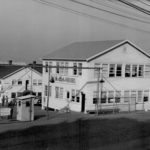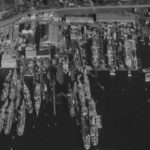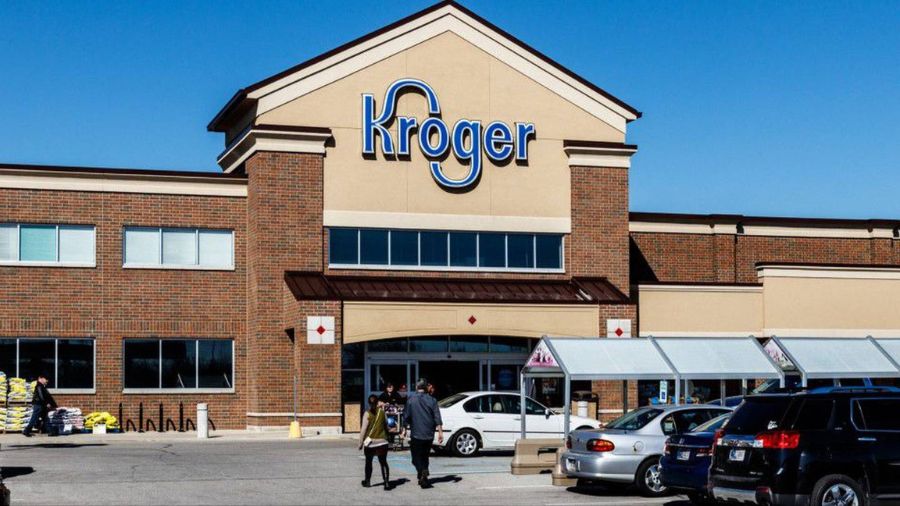Lake Washington shipyard created Eastside’s first traffic, housing boom
Jan 10, 2018, 6:11 AM | Updated: 9:29 am
Long before high tech made the Eastside boom, the old Lake Washington Shipyard south of downtown Kirkland in Houghton helped create the area’s first housing shortages and traffic problems.
And even road rage.
Investigators think they’ve identified the real D.B. Cooper
“The traffic was so bad, that going up Lake Washington Boulevard from here to Kirkland could take an hour,” said Matt McCauley on a visit to Carillon Point earlier this week.
McCauley is a Kirkland native in his early fifties who’s also an author and historian, and he’s been a volunteer with the Kirkland Heritage Society for decades. Carillon Point, with its office buildings, hotel and restaurants, was built in 1989 on the former site of the shipyard.
Shipyard workers
McCauley says that at its peak in the middle of World War II, the shipyard had more than 8,000 employees working in three shifts, with many living nearby in public housing built especially for shipyard workers. Since Kirkland was the nearest retail center, traffic jams between the shipyard and downtown Kirkland were common.
“The shipyard, as a PR move, actually bought Kirkland its first stoplight,” McCauley said. “And frequently, you would find fist fights because cars would park right here, the workers cars, and everybody trying to get out onto [Lake Washington Boulevard] to go either this way or this way, sometimes fights would break out. People had been working 12 hour shifts, and a lot of them were young and many had been drinking on the job.”
In those pre-sewer system days, says Matt McCauley, those 8,000 workers, even the ones who kept their fists to themselves, didn’t do much good for the water quality of Lake Washington.
“It was really bad during the Second World War because of what was going into the lake from this facility. There was somebody who was doing some water testing out there during the war and he said, ‘This is pretty much pure urine’ of the water out here in Yarrow Bay,” McCauley said. “It was really, really, really bad.”
The lake water was cleaner in Yarrow Bay before World War II, when the shipyard was a much smaller operation that dated to just after the turn of the century. Initially, vessels built there were made mostly of wood and were meant only for Lake Washington or the Sammamish River. However, once the Lake Washington Ship Canal and locks opened in 1917, vessels built at Houghton could go anywhere on Puget Sound or all over the world. Beginning in the late teens, a few vessels were built at Houghton for use in World War I, and the shipyard began building steel-hulled passenger ferries and other vessels for domestic use. In the 1930s, Houghton was where the burned out hulk of the ferryboat Peralta was reworked into the streamlined Kalakala.
Development in Kirkland
But Matt McCauley says the Lake Washington Shipyard really hit its stride during World War II.
“During the course of the war, they built just under 30 vessels for the Navy,” McCauley said, “and most of these were support vessels … not combat vessels” including seaplane tenders and net-laying ships.
In addition to constructing ships, McCauley says the Lake Washington Shipyard “built” a certain sector of Kirkland, when the city was much smaller, and its heart and soul were much more blue-collar than they are circa 2018.
“My custodian [Mr. Barry] from elementary school was a 1923 graduate from the high school in Kirkland, and his big job after high school was going to work at the shipyard,” McCauley said. “And my elementary school principal, who also was a native of Kirkland, Russ McClintick, he worked here, too, doing little stuff during the Second World War before he joined the Marines and went over to the South Pacific.”
“Everybody in Kirkland that had roots in that era had some connection to the shipyard,” McCauley said. “Pretty much everyone.”
Post-WWII
After the war ended in 1945, many of those 8,000 workers moved on, and, though they’d been through what amounted to the Eastside’s first economic boom, Houghton and Kirkland gradually returned to normal and stayed fairly quiet until the 1960s.
With little demand for ships immediately after the war, the structures left over from the old shipyard initially were repurposed and used as a sort of industrial park, and the docks were put to work storing fishing vessels and other miscellaneous old ships.
Sometime in the late 1940s or the early 1950s, the Seattle-based Skinner Corporation, who had their own shipbuilding history on Elliott Bay, bought the waterfront property in Houghton and began making plans to develop a private marina there. Those plans fell through, but the late Ned Skinner happened to be part of the investor group that brought the Seahawks franchise to Seattle. So, in 1976, the team built their first headquarters and training facility on the grounds of the old shipyard. The Seahawks remained there for a decade before moving to the nearby campus of Northwest College.
Houghton merges with Kirkland
As for Houghton, after failed votes in 1951, 1955 and 1953, Houghton eventually merged with Kirkland in 1968, though one can still spy the occasional “HOUGHTON LIVES” bumpersticker on the odd vintage four-door sedan at Marina Park every now and then.
Back at Carillon Point, can Matt McCauley name any tangible legacy of the Lake Washington Shipyard beyond the stories and the old photographs?
“No. It’s pretty much all gone, unless you put on a scuba tank and go and look at the junk that’s still out there on the bottom of the lake just off the shore,” McCauley said. As an experienced diver who’s pulled old World War II aircraft off the bottom of Lake Washington, he knows first-hand from diving at the old shipyard back in the early 1980s.
Even without anything recognizable on the landscape in Houghton, McCauley is not discouraged, and he remains committed to the everyday work of local history.
“I would like for there to have been some piece of [the shipyard] still left here so we could remember … that’s why we do things like we did the ferry clock restoration here a couple of years ago,” McCauley said. “And we’ve tried to do what we can to still protect whatever little scraps are left from Kirkland’s past as it’s developing so amazingly quickly now.”
“It’s easy to lose sight of where we came from,” McCauley said.





















